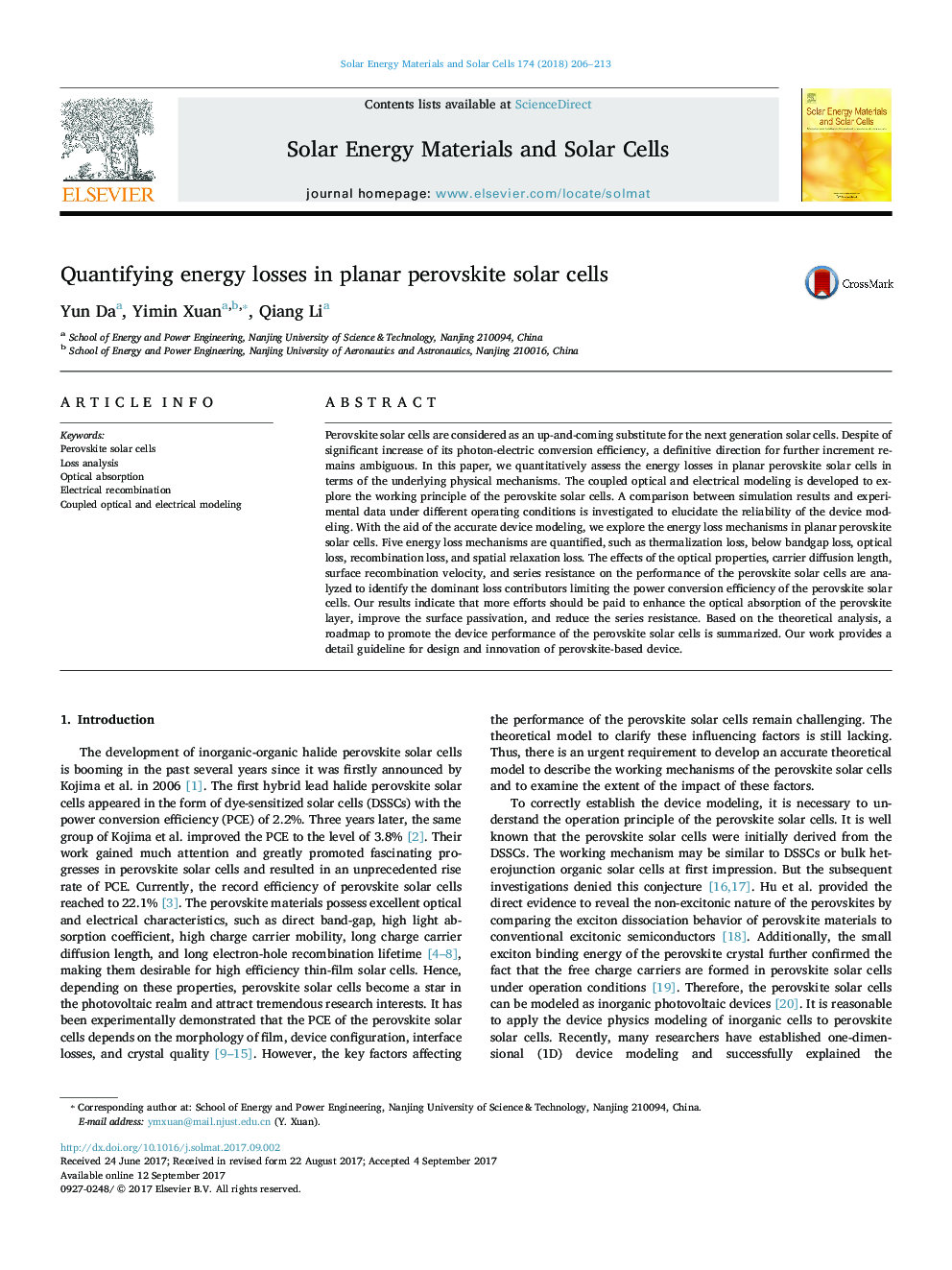| Article ID | Journal | Published Year | Pages | File Type |
|---|---|---|---|---|
| 6456657 | Solar Energy Materials and Solar Cells | 2018 | 8 Pages |
â¢The coupled optical and electrical modeling is performed to perovskite solar cells.â¢The energy losses in perovskite solar cells are quantitatively assessed.â¢The reflection and parasitic absorption are the dominant optical loss mechanisms.â¢Surface recombination and series resistance are the dominant electrical loss contributors.
Perovskite solar cells are considered as an up-and-coming substitute for the next generation solar cells. Despite of significant increase of its photon-electric conversion efficiency, a definitive direction for further increment remains ambiguous. In this paper, we quantitatively assess the energy losses in planar perovskite solar cells in terms of the underlying physical mechanisms. The coupled optical and electrical modeling is developed to explore the working principle of the perovskite solar cells. A comparison between simulation results and experimental data under different operating conditions is investigated to elucidate the reliability of the device modeling. With the aid of the accurate device modeling, we explore the energy loss mechanisms in planar perovskite solar cells. Five energy loss mechanisms are quantified, such as thermalization loss, below bandgap loss, optical loss, recombination loss, and spatial relaxation loss. The effects of the optical properties, carrier diffusion length, surface recombination velocity, and series resistance on the performance of the perovskite solar cells are analyzed to identify the dominant loss contributors limiting the power conversion efficiency of the perovskite solar cells. Our results indicate that more efforts should be paid to enhance the optical absorption of the perovskite layer, improve the surface passivation, and reduce the series resistance. Based on the theoretical analysis, a roadmap to promote the device performance of the perovskite solar cells is summarized. Our work provides a detail guideline for design and innovation of perovskite-based device.
